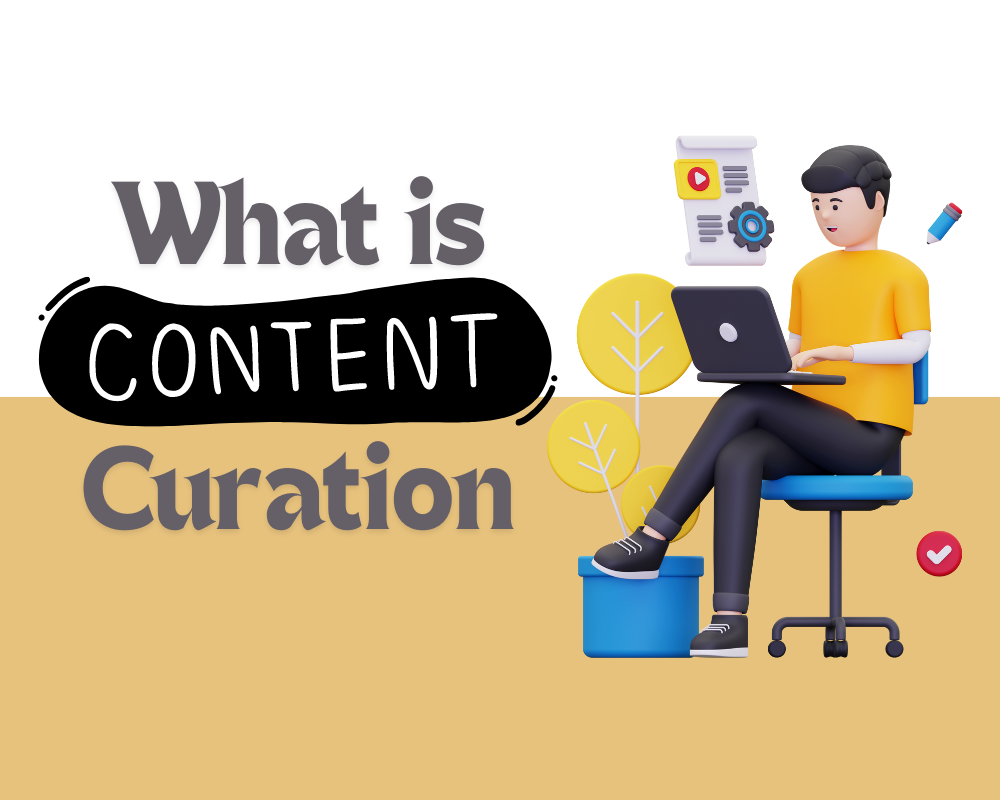Have you ever spent hours crafting what you thought was the perfect blog post or social media campaign, only to see disappointing results? You’re not alone! Many content creators, marketers, and business owners face this same challenge. Here’s the catch: your content might be amazing, but if it’s not reaching the right audience, it’s like shouting into the void.
Understanding your audience is the key to creating content that not only fills space but truly resonates, engages, and converts. By diving deep into who your audience really is, you can shape your messages, tone, and content to match exactly what they’re looking for. In this guide, we’ll share practical Tips to Create Targeted Content that speaks directly to your audience.
Ready to dive in? Let’s uncover the secrets to knowing your audience and crafting content that hits the mark every time!.
The Importance of Knowing Your Audience
Why does knowing your audience matter? Picture this: You’re trying to sell ice to someone in the Arctic. Not the best match, right? The same logic applies to your content. Without understanding who you’re talking to, your message might fall flat or miss its mark entirely.
Knowing your audience is crucial because it allows you to create content that connects on a deeper level. When you understand what your audience cares about, what keeps them up at night, and what they’re searching for, you can craft messages that truly resonate. This is where the magic happens—your audience feels seen and understood, leading to higher engagement rates, improved customer loyalty, and ultimately, better conversion rates.
Think about it this way: If your content speaks directly to the needs and interests of your audience, they’re more likely to share it, talk about it, and remember your brand when it’s time to make a decision. That’s the power of knowing your audience. It’s not just about selling more; it’s about building a community around your brand.
Ready to learn how to make this happen? Let’s move on to the practical tools and techniques for audience research.
Tools and Techniques for Audience Research
So, how do you get to know your audience better? The good news is there are plenty of tools and techniques at your disposal that can help you gather valuable insights about who your audience is and what they care about. Let’s dive into some of the most effective methods:

1. Surveys and Polls
Surveys and polls are one of the simplest yet most effective ways to gather direct feedback from your audience. Think of it as a conversation: You ask a question, and they tell you exactly what they think. By asking the right questions, you can uncover a wealth of information about their preferences, pain points, and desires.
- How to Use Surveys and Polls Effectively: Keep your questions clear and concise. Avoid leading questions that might skew the results. Tools like Google Forms, SurveyMonkey, and Typeform make it easy to create engaging surveys that your audience will want to answer.
2. Social Media Analytics
Social media platforms are treasure troves of data about your audience’s behavior and preferences. Ever notice how some posts get more likes or shares than others? That’s your audience telling you what they’re interested in!
- Utilizing Social Media Insights: Most major social media platforms, like Facebook, Instagram, Twitter, and LinkedIn, have built-in analytics tools. These tools can provide detailed information on who your followers are, what content they engage with most, and when they’re most active. Use these insights to tailor your content strategy to better meet their needs.
3. Google Analytics
When it comes to understanding how visitors interact with your website, Google Analytics is your best friend. This powerful tool allows you to track a variety of metrics, such as page views, session duration, and bounce rates. But the real goldmine? Demographic and interest data that shows who’s visiting your site and what they’re interested in.
- Getting the Most Out of Google Analytics: Set up custom reports to track key performance indicators (KPIs) that are important to your business. Analyze this data regularly to identify patterns and trends that can inform your content strategy.
4. Competitor Analysis
If you want to know what works, sometimes it pays to look at what your competitors are doing. It’s not about copying them; it’s about learning from their successes and failures.
- Conducting Competitor Analysis: Look at the type of content they produce, the platforms they use, and how their audience engages with them. Tools like SEMrush, Ahrefs, and BuzzSumo can help you analyze your competitors’ content and see which of their pieces are performing well. Use these insights to refine your own strategy and find gaps that you can fill.
Each of these tools and techniques provides valuable insights that, when combined, paint a comprehensive picture of your audience. Ready to take the next step? Let’s explore how to analyze this data to gain a deeper understanding of your audience.
Analyzing Data to Understand Your Audience
Now that you’ve gathered your data, what’s next? Collecting data is just the beginning. The real power lies in analyzing this data to uncover meaningful insights about your audience. Let’s break down the steps to turn your data into a roadmap for creating targeted content.

1. Breaking Down Demographics, Psychographics, and Behavioral Data
To truly understand your audience, you need to look at three key types of data:
- Demographics: This includes age, gender, location, income level, and education. These basic details help you create a general profile of who your audience is. For instance, if most of your audience is young professionals, you might focus on creating content that addresses career growth or work-life balance.
- Psychographics: These go beyond surface-level characteristics to explore your audience’s interests, values, lifestyle, and opinions. Understanding psychographics helps you connect with your audience on an emotional level, crafting content that aligns with their beliefs and aspirations.
- Behavioral Data: This type of data tells you how your audience interacts with your content and brand. Are they visiting your site regularly? What types of content are they engaging with most? How long are they spending on your site? Behavioral data gives you clues about what keeps them coming back and what might be driving them away.
2. Using Data to Create Buyer Personas
Buyer personas are fictional characters that represent segments of your audience. Think of them as your ideal customers, based on the data you’ve collected. Creating detailed buyer personas helps you visualize who you’re writing for and tailor your content to meet their specific needs.
- How to Create Buyer Personas: Start by identifying commonalities in your data. Group your audience into segments based on shared characteristics like demographics, interests, and behavior. For each segment, create a persona that includes details like age, profession, goals, challenges, and preferred content types.
3. Identifying Trends and Patterns in Audience Behavior
Once you have a clear picture of who your audience is, look for trends and patterns in their behavior. Are there certain topics or content formats they engage with more than others? Do engagement levels fluctuate based on the time of day or week? By identifying these trends, you can refine your content strategy to better align with your audience’s preferences.
- Tracking and Analyzing Trends: Use tools like Google Analytics and social media insights to monitor engagement metrics over time. Look for spikes or drops in activity and dig deeper to understand what might have caused them. Adjust your strategy accordingly, whether it’s posting more of what works or rethinking what doesn’t.
By breaking down your data, creating buyer personas, and identifying behavioral patterns, you’ll gain a deeper understanding of your audience and be better equipped to create content that resonates with them. Next up, let’s explore how to put this knowledge into action by crafting content that speaks directly to your audience.
Creating Content that Resonates with Your Audience
Understanding your audience is one thing, but how do you use this knowledge to create compelling content? This is where the magic happens—transforming insights into action. Let’s explore how to craft content that not only captures attention but also keeps your audience coming back for more.

1. Crafting Messages That Speak Directly to Your Audience’s Needs and Interests
Content is all about communication. When you know what your audience cares about, you can tailor your messages to speak directly to their needs, desires, and pain points. This means going beyond surface-level topics and digging into the issues that matter most to them.
- How to Do It: Use the data from your audience research and buyer personas to identify key topics that resonate with your audience. For example, if your audience consists of small business owners struggling with digital marketing, create content that provides practical tips and strategies to help them succeed. Address their pain points and offer solutions that are easy to implement.
2. Tailoring Content Formats to Suit Audience Preferences
People consume content in different ways. Some prefer reading in-depth blog posts, while others might enjoy quick videos or listening to podcasts on the go. To truly connect with your audience, it’s important to deliver content in formats they prefer.
- Finding the Right Format: Look at your data to see which types of content your audience engages with the most. Do they spend more time on your blog, watch videos, or interact with infographics? Experiment with different formats and see what gets the best response. Remember, the goal is to make it as easy as possible for your audience to consume your content.
3. The Importance of Voice and Tone in Content
Voice and tone are what give your content personality. They help you stand out from the crowd and create a connection with your audience. The right voice and tone can make your content feel like a conversation with a trusted friend, rather than a sales pitch.
- Developing Your Voice and Tone: Your voice should reflect your brand’s personality—whether it’s professional, friendly, humorous, or authoritative. Your tone, on the other hand, can change depending on the context of the content. For example, a blog post about overcoming challenges might have an encouraging and motivational tone, while a product announcement might be more formal and informative.
By crafting messages that speak directly to your audience, choosing the right content formats, and developing a consistent voice and tone, you’ll be well on your way to creating content that resonates deeply with your audience. But remember, even the best content can miss the mark if common mistakes are made. Let’s explore some of the pitfalls to avoid in the next section.
Common Mistakes in Audience Research
Even with the best intentions, it’s easy to make mistakes when conducting audience research. These errors can lead to content that misses the mark, wasting both time and resources. Let’s look at some of the most common pitfalls and how you can avoid them.

1. Assuming You Know Your Audience Without Data
One of the biggest mistakes you can make is assuming you already know your audience without backing it up with data. It’s easy to fall into the trap of thinking your audience is just like you or that you understand their needs based on a few interactions. However, this can lead to misguided strategies and content that doesn’t resonate.
- Avoiding This Mistake: Always rely on data to inform your understanding of your audience. Conduct surveys, analyze website and social media analytics, and keep an eye on industry trends. Make decisions based on hard facts, not assumptions.
2. Ignoring or Misinterpreting Data
Having data is one thing, but knowing how to interpret it is another. Many content creators collect data but don’t take the time to analyze it properly, or they misinterpret what the data is actually telling them. This can lead to misguided strategies that don’t align with the audience’s true needs.
- Avoiding This Mistake: Take the time to thoroughly analyze your data. Look for patterns and trends, and consider using data visualization tools to help make sense of the numbers. If you’re unsure how to interpret your data, consider hiring a professional analyst or using specialized software.
3. Overgeneralizing Your Audience
It’s tempting to try to reach as broad an audience as possible, but doing so often means your content ends up appealing to no one in particular. Overgeneralizing can dilute your message and make it difficult to connect with any specific group.
- Avoiding This Mistake: Focus on creating content for specific segments of your audience, rather than trying to please everyone. Use your buyer personas to guide your content creation, and don’t be afraid to niche down. Remember, it’s better to deeply resonate with a smaller group than to barely connect with a larger one.
4. Failing to Keep Up with Audience Changes
Audiences are not static; they evolve over time. As their preferences, needs, and behaviors change, so too should your content strategy. If you’re not keeping up with these changes, your content may become outdated or irrelevant.
- Avoiding This Mistake: Regularly update your audience research and keep an eye on emerging trends. Conduct periodic surveys, review your analytics, and engage with your audience to get direct feedback. Staying agile and adaptable will ensure your content remains fresh and relevant.
By avoiding these common mistakes, you can ensure that your audience research is accurate and effective, helping you create content that truly resonates. But how do you see these principles in action? Let’s look at some real-life examples in the next section.
Case Studies of Successful Audience Targeting
Seeing is believing, right? Sometimes, the best way to learn is by looking at real-life examples of brands or individuals who have nailed audience targeting. Let’s dive into a few case studies to see how understanding your audience can lead to content that truly resonates.

1. Nike: “Dream Crazy” Campaign
Nike’s “Dream Crazy” campaign, featuring Colin Kaepernick, is a powerful example of a brand understanding its audience and speaking directly to them. Nike recognized that its core audience—young, diverse, and socially conscious consumers—values authenticity and taking a stand on social issues.
- Why It Worked: Nike’s campaign was more than just an ad; it was a statement that resonated with its target audience’s values. By aligning with Kaepernick, Nike connected deeply with consumers who value activism and social justice, even if it meant alienating a different segment of the market. The campaign was a huge success, sparking conversations and increasing brand loyalty among its target demographic.
2. Spotify: Personalized Playlists and Wrapped Campaign
Spotify is another great example of a brand that knows its audience well. By leveraging user data, Spotify creates personalized playlists like Discover Weekly and Release Radar, which recommend songs based on users’ listening habits. Its annual “Wrapped” campaign also allows users to see a summary of their listening habits for the year.
- Why It Worked: Spotify’s use of data to create personalized experiences shows a deep understanding of its audience’s desire for customization and personalization. The Wrapped campaign, in particular, creates a sense of nostalgia and community as users share their listening habits on social media. This approach not only enhances user experience but also drives engagement and brand loyalty.
3. Glossier: Leveraging User-Generated Content
Glossier, a beauty brand, has built a strong community by actively engaging with its audience and leveraging user-generated content (UGC). Instead of focusing on traditional advertising, Glossier prioritizes content created by its customers, sharing real stories and experiences with its products.
- Why It Worked: Glossier understands that its audience trusts real people more than polished ads. By encouraging customers to share their own photos and reviews, Glossier creates a sense of authenticity and community. This strategy not only saves on marketing costs but also fosters a loyal customer base that feels personally connected to the brand.
These case studies illustrate how understanding your audience can lead to innovative and effective content strategies. Whether it’s through bold campaigns, personalized experiences, or authentic community building, these brands demonstrate the power of audience research. Ready to keep your audience engaged? Let’s move on to some tips for continuous audience engagement in the next section.
Tips for Continuous Audience Engagement
Understanding your audience is just the beginning. The key to long-term success is keeping your audience engaged and maintaining a strong relationship over time. This means continuously adapting and evolving your content to meet their changing needs and preferences. Let’s explore some effective strategies for ongoing audience engagement.

1. Stay Updated with Audience Preferences and Trends
Audiences evolve, and so should your content strategy. Staying in tune with your audience’s shifting preferences and trends is crucial for keeping them engaged. This involves regularly updating your research and being proactive about monitoring changes in your audience’s behavior.
- How to Stay Updated: Use tools like Google Trends to monitor what’s popular in your industry. Regularly check your social media and website analytics to see what content is performing well. Pay attention to comments, likes, shares, and other forms of engagement to gauge what your audience is interested in. Additionally, keep an eye on industry news and updates to stay ahead of the curve.
2. Encourage Two-Way Communication
Engagement isn’t just about broadcasting your message; it’s about building a dialogue. Encouraging two-way communication helps create a more interactive and dynamic relationship with your audience, making them feel heard and valued.
- Ways to Foster Communication: Ask questions in your content and invite your audience to share their thoughts and experiences. Use polls and surveys to gather feedback. Respond to comments and messages promptly to show that you’re listening. Hosting live Q&A sessions or webinars can also be a great way to engage directly with your audience and address their concerns in real-time.
3. Provide Value Consistently
Consistency is key when it comes to audience engagement. Your audience needs to know they can count on you for valuable content that meets their needs and interests. By consistently providing high-quality content, you build trust and loyalty, encouraging your audience to keep coming back for more.
- How to Provide Consistent Value: Develop a content calendar to plan and schedule your posts in advance. This ensures that you’re regularly providing fresh, relevant content. Mix up your content formats to keep things interesting—blogs, videos, infographics, podcasts, etc. And don’t forget to revisit and update older content to ensure it remains accurate and useful.
4. Personalize Your Content
Personalization is a powerful tool for deepening engagement. When your audience feels like you’re speaking directly to them, they’re more likely to stay engaged and invested in your content. This goes beyond using their name in an email; it’s about delivering content that feels tailored to their specific needs and interests.
- Personalization Tips: Use segmentation to target different audience groups with specific content that meets their unique needs. Leverage data from your audience research to create personalized recommendations or offers. For example, if a segment of your audience frequently reads articles about social media marketing, consider creating a targeted newsletter with tips and trends in that area.
5. Measure and Adapt
Engagement isn’t a one-time effort; it’s an ongoing process. To keep your audience engaged, you need to measure the effectiveness of your strategies and be willing to adapt as needed. This means regularly reviewing your analytics, assessing what’s working, and making adjustments based on what you learn.
- How to Measure and Adapt: Set clear goals and KPIs (key performance indicators) for your engagement efforts. Use tools like Google Analytics, social media insights, and email marketing reports to track your performance. Analyze the data to identify what’s driving engagement and what isn’t. Be prepared to experiment with new strategies and tactics, and don’t be afraid to pivot if something isn’t working.
By staying updated, encouraging communication, providing consistent value, personalizing your content, and regularly measuring your efforts, you can keep your audience engaged and build lasting relationships. Now that we’ve covered how to keep your audience engaged, let’s wrap things up in the conclusion.
Conclusion
Knowing your audience is the cornerstone of effective content creation. It’s not just about making noise; it’s about making an impact. By understanding who your audience is, what they care about, and how they behave, you can craft content that resonates deeply and keeps them coming back for more.
We’ve explored the importance of audience research and shared practical tools and techniques to help you gather valuable insights. We’ve also delved into how to analyze this data to understand your audience better and translate those insights into content that truly connects. From avoiding common mistakes to learning from successful case studies, you’re now equipped with a wealth of strategies to refine your content approach.
But remember, the work doesn’t stop here. Audience engagement is an ongoing journey. Stay adaptable, keep learning, and continue to evolve with your audience’s changing needs and preferences. By fostering a strong, dynamic relationship with your audience, you’ll build a community that not only values your content but also advocates for your brand.
So, what’s your next step? Put these tips into practice and start creating content that truly speaks to your audience. And don’t forget to share this post, subscribe to our newsletter for more valuable insights, or download our free guide on audience research. Let’s make sure your content always hits the mark!













